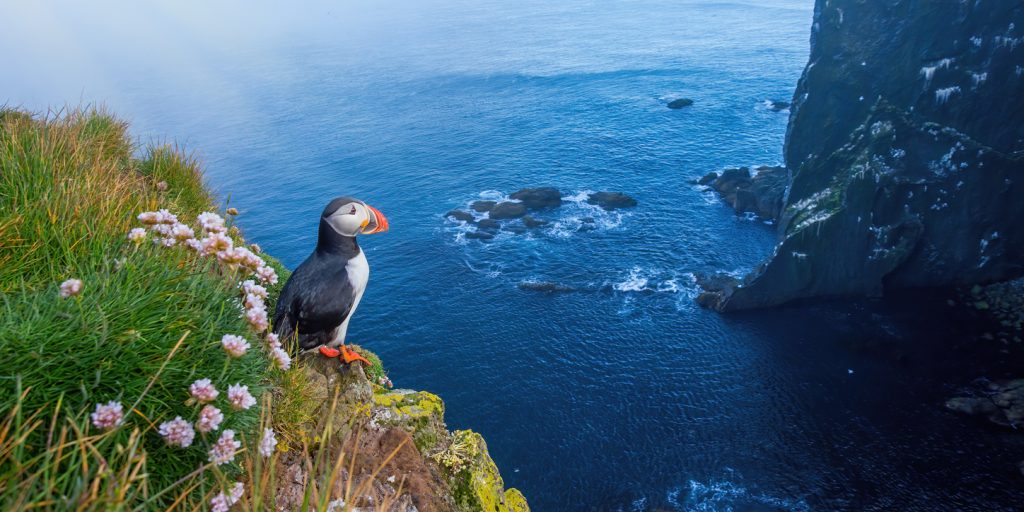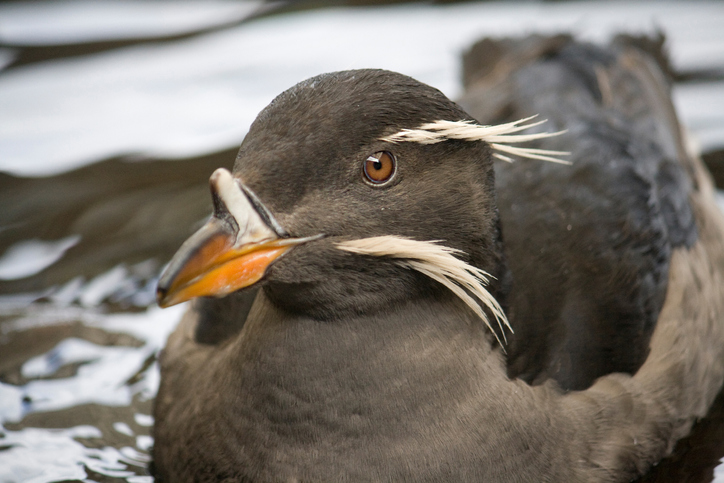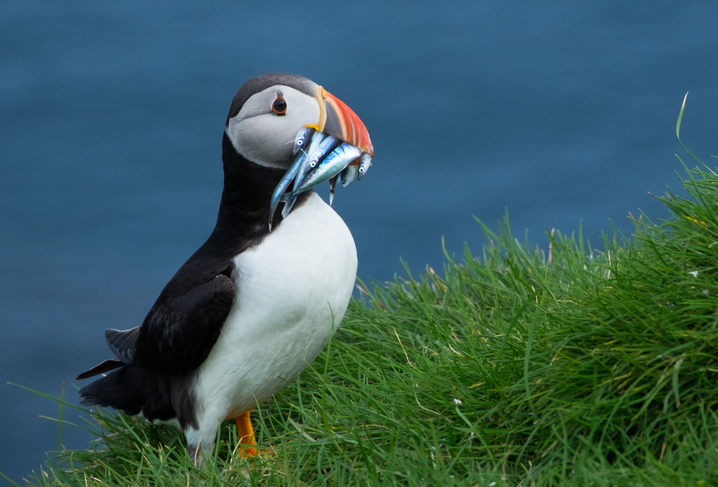In the frigid waters of the northern oceans, a remarkable creature thrives – the puffin. These small migratory seabirds, comprising four distinct species, are a marvel of adaptation and beauty. They are also the marine version of a “canary in a coal mine” when it comes to ocean health.
The name “puffin” comes from the bird’s distinctive appearance, which was first described in detail for the Atlantic puffin species in 1570. With their rotund bodies and dark capes, these birds resemble chubby medieval friars, earning them the nickname “little friars of the north” or Fratercula arctica.
Each species of puffin has its own unique habitat. Still, all can be found in the frigid waters of the Arctic and subarctic regions. The Atlantic puffin (Fratercula arctica), the most common species, can be found in the North Atlantic. In contrast, the other three species – the horned puffin (Fratercula corniculata), tufted puffin (Fratercula cirrhata), and rhinoceros auklet (Cerorhinca monocerata) – are found in the North Pacific.
The three Fratercula puffins have similar appearances, with black upper bodies and large colorful beaks. The rhinoceros auklet has a smaller bill and is predominantly gray in color.
While the rhinoceros auklet doesn’t look like it belongs in the same family as the other puffins, recent genetic research has revealed that all three Fratercula puffins evolved from an earlier common rhinoceros auklet ancestor.
Puffins are recognized by their round, compact body shape, with short wings and legs. Their most prominent feature is their large, colorful beaks, which can be orange, red, or yellow, depending on the species.
Like many marine birds, puffins spend much of their time at sea foraging for schooling fish. They can even drink seawater and expel the excess salt out of glands in their nostrils.
Puffins swim underwater by flapping their wings as if flying through the water, using their feet as a rudder. These birds are excellent divers and can descend up to 200 feet deep in search of prey.
Puffins are carnivorous birds that feed primarily on small fish like herring, sand eels, and small squid. They use their beaks to catch and hold their prey, which they then swallow whole. The average catch is around 10 small fish per trip, and they can make up to 100 trips in a day if they are supplying their young with food.
The puffin is able to hold so many fish due to its raspy tongue. The bird pushes the tongue against the spines on the upper palate, pinning the slippery fish in place. This allows the puffin to open its beak to catch more fish on a single dive.
Puffins have a unique mating and breeding cycle. They usually mate for life and return to the same nesting site on steep coastal cliffs. After returning from a winter at sea, the mating couple reunites at the nest they’ve used year after year. The pair bumps beaks and pecks each other on the cheek in a courtship display known as “billing.”
Once the female puffin lays a single egg, each parent takes turns incubating for 40 days. After the egg hatches, the parents take turns feeding the chick, which fledges after around six weeks.
Puffin chicks, or “pufflings,” are raised in below-ground burrows or hidden between rocks on steep cliffs. The adults prepare the burrow by cutting into the soil with their bills and then using their legs to move the dirt behind them. The puffin also creates a side room in the burrow that the puffling uses as a bathroom, so it doesn’t dirty its feathers. As the puffling matures, the parents move the bathroom closer to the entrance.
The lifespan of a puffin can vary depending on the species and location. In general, puffins can live for up to 20 years in the wild. However, studies have shown that some puffins may live up to 40 years.
Puffins are social birds that form large breeding colonies and are often seen flying and swimming together in groups. Puffins can also fly at speeds of up to 55 miles per hour and can fly up to 30 miles from shore in search of food.
In 2009, researchers estimated that the biggest colony of Atlantic Puffins, found in the Westmann Isles of Iceland, held more than four million birds with approximately one million nests.
These birds are also sensitive indicators of ocean health, making their conservation a matter of global concern. Because puffins are entirely dependent on marine food resources, their future is most threatened by global warming of ocean waters and overfishing.
While puffins are not technically endangered globally, the Atlantic puffin is classified as vulnerable. Their numbers have improved in some areas due to the efforts of conservationists. Still, newer threats like climate change and plastic pollution continue to threaten these seafaring “little friars.”



